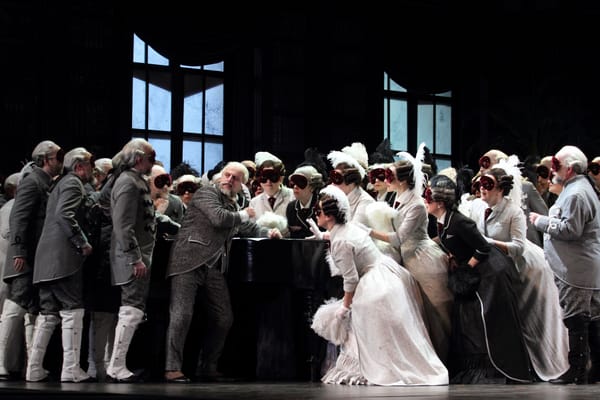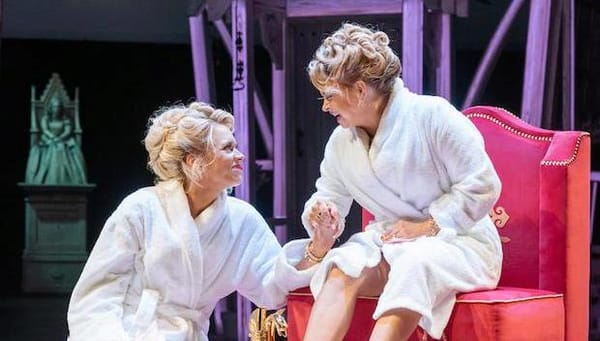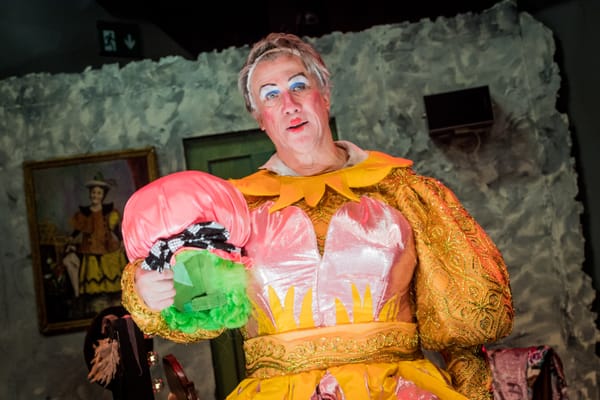An Homage to Joie De Vivre
Les Antliaclastes’ Waltz of the Hommelettes fuses folklore and fantasy with a flourish.

I like it. I just don’t get it,” my neighbour-turned-philosopher laments to her friend. As the audience stumbles out of our shared reverie, the sentiment is echoed through the foyer. The performance was well-executed, from eerily lifelike puppetry to the clever weaving of fairytale themes. But there was no easy message offered on a platter to the bemused, yet amused, spectators. Thank god!
I attended this performance on the same evening as the Brexit deal vote. While media pundits and armchair analysts desperately tried to grasp meaning amid the anarchy of the night, the Waltz offered welcome refuge. Unlike our national emancipation, the performance offered solace in surrealism, and an escape into the nostalgia of European folklore. We were served an antidote to the miserable realism of everyday life.
The show begins before the audience has even found their seats. A figure wearing a bird mask slowly feeds string into a cotton mule, the machinery’s creaks raising hair and eyebrows alike. She cocks her head sideways at passers-by as the lights dim. As she weaves her nest, the Waltz of the Hommelettes begins.
For some, a clear plot serves as a source of certainty and safety in the face of fast-paced, or introspective, scenes. Yet, Les Antliaclastes offer no such guarantee. Like the frantic mind of a child, we are ferried between subplots and skits, not pausing for long enough to sink into philosophical analysis. Their skill lies not in explanation, but pure unadulterated entertainment. To do so, they draw on syncretic Pagan-Christian mythos and lore. From the comically macabre elves strutting across the shoemaker’s floor to the pantomime-like exploits of the Rabbit, we are treated to elements of Graham Greene, the Brothers Grimm, and Aesop’s fables.
This ballad to traditional, rural Europe is also found in the accompanying sound. Benjamin Britten’s ‘Cuckoo’ nests comfortably in the soundtrack, alongside the haunting melodies of Louis Thomas Hardin, AKA Moondog (the Viking of 6th Avenue, a visionary worthy of more praise than I have space for here).
I recall attending a puppetry workshop at the Barbican as a child, where we were taught to incorporate as much care and attention in building the puppet as we would then show in our performance. In doing so, the marionette becomes an extension of its invisible master. The Antliaclastes know this all too well, as the transition from actor to puppeteer lost none of the playful and esoteric joy.
What, if anything, is there to ‘get’ from such an eccentric journey through folklore? Director Patrick Sims puts it well in an interview with the Barbican, where the “alchemical symbolism” of the tales skewers the “hypocrisy of adult logic”, using the supernatural to wordlessly discuss morality. As children, we all enjoyed the adventure of tales and fables, but it is the wisdom they instilled in us that allows such stories to stand the test of time.
Do not go to the Waltz of the Hommelettes if you want instant pleasure, an easy watch, or a jester’s jig. Go to see centuries of tradition distilled into masterful performance, to enjoy release from the strains of adult life, and to rekindle the unspoken joie de vivre that childhood brings.
-4 stars









